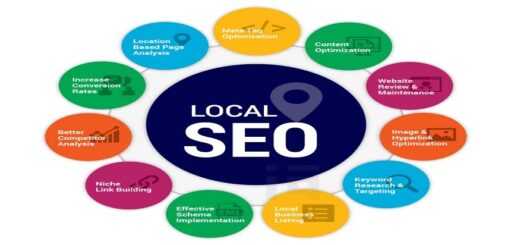Email Marketing: Top Metrics in 2023
In today’s digital age, email marketing continues to be a powerful tool for businesses to connect with their target audience and drive conversions. However, the success of your email marketing campaigns relies on more than just crafting compelling content and hitting the send button. To optimize your email marketing efforts, it is crucial to track and analyze relevant metrics. In this article, we will explore the key email marketing metrics you should be tracking to measure the effectiveness of your campaigns and make data-driven improvements.

Email marketing remains an integral part of digital marketing strategies for businesses across various industries. To extract maximum value from your email campaigns, it is essential to track and analyze specific metrics. By understanding the performance of your emails, you can identify strengths and weaknesses, make informed decisions, and refine your strategies to achieve better results.
Open Rate: Measuring Email Engagement
The open rate indicates the percentage of recipients who open your emails. It provides insights into the effectiveness of your subject lines and overall email appeal. To improve open rates, consider using personalized subject lines, concise and compelling preview text, and segmenting your audience to send targeted content. Experiment with different approaches, such as posing intriguing questions or offering exclusive discounts, to entice recipients to open your emails and engage with your brand.
Click-Through Rate (CTR): Evaluating Email Effectiveness
The click-through rate measures the percentage of recipients who clicked on a link or call-to-action within your email. A high CTR suggests that your email content is engaging and successfully drives recipients to take action. To boost CTR, optimize your email design and layout, include clear and prominent calls-to-action, and ensure mobile responsiveness. Test different placements and designs for your buttons or links, and provide compelling and relevant content that entices readers to click and explore further.
Conversion Rate: Assessing Campaign Performance
The conversion rate tracks the percentage of recipients that could be making a purchase, filling out a form, or downloading a resource. By monitoring this metric, you can determine how effective your emails are in generating tangible results and identify areas for improvement. Optimize your landing pages to align with the content and offer in your emails, create a smooth and intuitive user experience, and provide persuasive and compelling messaging to encourage conversions.
Bounce Rate: Monitoring Email Deliverability
High bounce rates may indicate issues with your email list quality, such as invalid or inactive email addresses. Regularly clean your email list, follow best practices for list acquisition, and ensure your emails comply with anti-spam regulations to minimize bounce rates. Monitor your bounce rates closely to identify any potential deliverability issues and take appropriate action to maintain a healthy and engaged subscriber list.
Unsubscribe Rate: Gauging Subscriber Satisfaction
The unsubscribe rate shows the percentage of subscribers who opted out of receiving further emails from your business. It is crucial to monitor this metric as it reflects subscriber satisfaction and the relevance of your email content. Analyze the reasons behind unsubscribes and fine-tune your email strategy to reduce opt-outs. Ensure that your email frequency aligns with your subscribers’ expectations, deliver valuable and tailored content, and provide easy and prominent unsubscribe options to maintain a positive subscriber experience.
List Growth Rate: Tracking Subscriber Acquisition
The list growth rate quantifies the rate at which your email subscriber list is expanding. It helps you assess the effectiveness of your lead generation efforts and the attractiveness of your email campaigns. To foster list growth, leverage lead magnets, optimize sign-up forms, and promote your newsletter across different marketing channels. Offer exclusive content or incentives in exchange for email sign-ups, create visually appealing and user-friendly sign-up forms, and explore partnerships or collaborations to expand your reach and attract new subscribers.
ROI: Determining the Value of Email Marketing
It considers the costs involved in running your campaigns and the revenue generated from those efforts. Calculate your ROI by analyzing metrics like conversion rate, average order value, and customer lifetime value. This helps you evaluate the overall effectiveness and profitability of your email marketing strategy. Regularly review and analyze your campaign metrics to identify areas where you can optimize costs, improve conversions, and maximize the return on your email marketing investments.
Email Client Analysis: Understanding User Preferences
Analyzing the email client data helps you understand which email clients your subscribers use to access their emails. It allows you to optimize your email design and rendering to ensure compatibility across popular email clients. By catering to user preferences, you enhance the user experience and maximize the impact of your email campaigns. Test your emails across various email clients, identify any rendering issues or discrepancies, and optimize your code and design to ensure consistent and visually appealing experiences across different platforms.
Know more –https://emailnphonelist.com/what-is-163-com-why-is-it-so-popular/
Conclusion
Tracking and analyzing email marketing metrics is crucial for optimizing your campaigns and achieving better results. By paying attention to metrics like open rate, click-through rate, conversion rate, bounce rate, unsubscribe rate, list growth rate, and ROI, you gain valuable insights into your email performance. Leverage A/B testing, segmentation, personalization, mobile responsiveness, email client analysis, and monitoring spam complaint rates to enhance engagement, increase conversions, and build stronger relationships with your subscribers.



